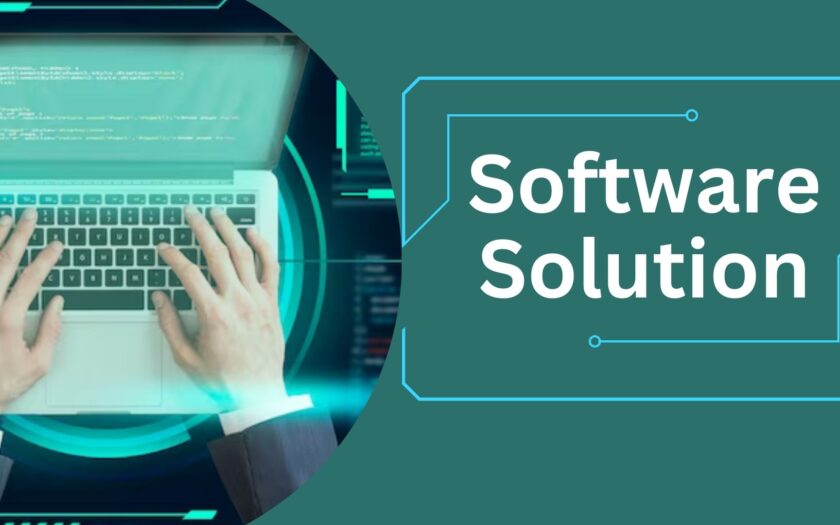Selecting the right software solution for your business is a crucial decision that can impact productivity, efficiency, and long-term success. With a wide array of options—ranging from off-the-shelf software to custom-built solutions—it’s important to take a structured approach when making your decision. In this guide, we’ll explore the key steps to help you choose the best software for your company’s unique needs.
1. Assess Your Company’s Needs and Objectives
Before diving into the search for software, it’s essential to first understand your company’s specific needs and goals. This evaluation will provide clarity and help you avoid selecting a solution that doesn’t align with your business requirements.
How to Assess Your Needs:
- Identify Core Challenges: Pinpoint the key issues or inefficiencies within your organization that software can help address, such as manual processes, data inaccuracies, or communication breakdowns.
- Engage Key Stakeholders: Involve team members from different departments to gather insights into their pain points and needs. This ensures that the software solution benefits all departments.
- Define Business Objectives: Align your software selection with your business goals. For instance, if your objective is to enhance customer experience, look for software with strong customer relationship management (CRM) features.
Why This Step is Crucial:
- Customized Fit: Assessing your needs ensures the software is tailored to your company’s specific challenges, minimizing the risk of selecting an ineffective solution.
- Resource Efficiency: By narrowing down your needs, you can focus on software that addresses your core priorities, helping you allocate resources more efficiently.
2. Evaluate Your Budget and Total Cost of Ownership
Understanding the financial implications is key when selecting software. It’s not just about the upfront cost but also ongoing expenses and the total cost of ownership (TCO) over time.
How to Evaluate Costs:
- Understand Pricing Models: Software pricing can vary—subscription-based (SaaS), one-time licenses, or usage-based billing. Choose a model that aligns with your company’s financial structure.
- Account for Hidden Costs: Consider additional costs like implementation, customization, training, support, and upgrades.
- Calculate TCO: To get a full picture of the investment, consider both upfront and long-term operational costs.
Why Budget Evaluation Matters:
- Cost-Efficiency: Evaluating the financial impact ensures that the solution delivers value without stretching your budget.
- Long-Term Planning: Understanding the TCO helps avoid budget surprises and enables better long-term planning.
3. Research and Compare Available Solutions
After defining your needs and budget, the next step is researching different software solutions. This phase involves thorough investigation to ensure you make an informed decision.
How to Research Effectively:
- Explore Industry-Specific Solutions: Seek out software tailored to your industry, which often comes with features designed to meet industry-specific challenges.
- Read Reviews and Case Studies: Reviews and case studies offer insights into real-world performance and can provide valuable lessons from similar companies.
- Test with Demos and Trials: Many providers offer free demos or trials. Use this opportunity to assess the software’s functionality and integration with your current systems.
Why Research is Key:
- Informed Decisions: Thorough research helps you compare options based on real-world feedback, reducing the risk of selecting underperforming software.
- Hands-On Experience: Testing software firsthand gives you a clear idea of its usability and compatibility with your business processes.
4. Consider Scalability and Integration
Scalability is essential when choosing software. You want a solution that can grow with your business and integrate seamlessly with your current systems.
How to Assess Scalability:
- Evaluate Growth Potential: Ensure the software can scale as your business grows, including handling larger data volumes or more users.
- Look for Flexible Features: Choose software with modular features or tiered pricing that allows you to add new capabilities as needed.
How to Evaluate Integration:
- Check Compatibility: Ensure the software integrates with your existing systems to prevent disruptions.
- Look for API Support: If integration isn’t seamless, APIs or custom integrations can help you tailor the software to your workflows.
Why Scalability and Integration Matter:
- Future-Proofing: Scalable software ensures long-term value, avoiding the need for costly replacements as your business grows.
- Efficiency Gains: Seamless integration enhances productivity by improving workflow across departments and reducing data silos.
5. Analyze Security and Compliance
Security and compliance are top priorities, especially in today’s landscape where data breaches are common. Ensuring your software meets industry regulations and protects sensitive data is critical.
How to Evaluate Security:
- Data Protection: Verify that the software provider follows best practices for data security, including encryption and regular updates.
- Compliance with Regulations: Ensure that the software adheres to any industry-specific standards, such as GDPR or HIPAA.
Why Security and Compliance Are Vital:
- Risk Mitigation: A secure software solution minimizes the risk of data breaches and helps you remain compliant with regulations, protecting your company from legal and financial liabilities.
- Building Trust: Strong security protocols foster trust with customers and stakeholders, reassuring them that their data is safe.
Conclusion
Choosing the right software solution requires a thorough understanding of your company’s needs, budget, and long-term goals. By following a structured approach that includes needs assessment, financial evaluation, in-depth research, and a focus on scalability, security, and integration, you can find the right software to support your business’s growth and success. Taking the time to make an informed decision ensures you choose a solution that meets your company’s unique requirements today and in the future.
How to Choose the Right Software Solution
